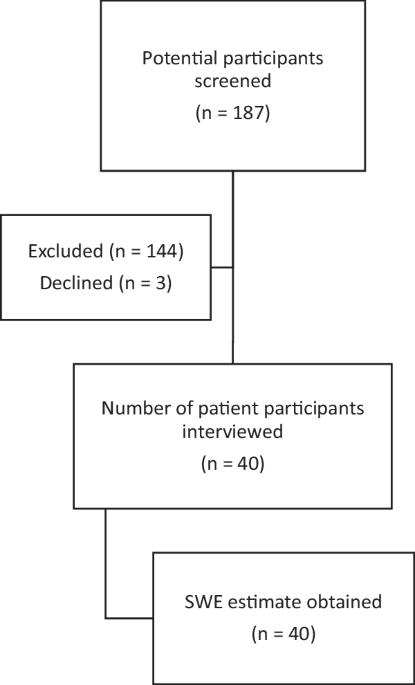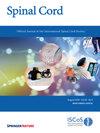使用利弊权衡法确定强化运动训练对脊髓损伤患者力量的最小值得影响
IF 2.1
4区 医学
Q3 CLINICAL NEUROLOGY
引用次数: 0
摘要
研究设计采用利弊权衡法进行访谈,并进行在线调查。目的确定运动训练对脊髓损伤(SCI)患者力量的最小值得效应(SWE)。方法招募了 40 名参加过运动训练作为康复计划一部分的近期 SCI 患者(患者参与者)和 37 名从事 SCI 工作的物理治疗师(物理治疗师参与者)。患者参与者采用利弊权衡法进行了反复试验,以确定运动训练对力量的影响。理疗师参与者接受了一项在线调查,以确定五种不同情况的 SWE。两组人都考虑了物理治疗干预的SWE,即在常规治疗的基础上额外增加12小时的运动训练,为期10周。他们需要估算出最小的力量改善(国际 SCI 神经系统分类标准的运动总分),以证明运动训练所付出的努力和相关成本、风险或不便是合理的。结果患者和物理治疗师参与者认为值得为运动训练付出努力和相关成本、风险或不便的最小力量改善中位数(四分位数间距)分别为 3 (1-5) 分和 9 (7-13) 分。物理治疗师希望看到更大的改善,以证明干预的合理性。本文章由计算机程序翻译,如有差异,请以英文原文为准。

Using the benefit-harm trade-off method to determine the smallest worthwhile effect of intensive motor training on strength for people with spinal cord injury
Interviews using the benefit-harm trade-off method and an online survey. To determine the smallest worthwhile effect (SWE) of motor training on strength for people with spinal cord injury (SCI). SCI units, Australia. Forty people with recent SCI who had participated in motor training as part of their rehabilitation program (patient participants) and 37 physiotherapists (physiotherapist participants) working in SCI were recruited. The patient participants underwent an iterative process using the benefit-harm trade-off method to determine the SWE of motor training on strength. The physiotherapist participants were given an online survey to determine the SWE for five different scenarios. Both groups considered the SWE of a physiotherapy intervention involving an additional 12 h of motor training for 10 weeks on top of usual care. They were required to estimate the smallest improvement in strength (points on the Total Motor Score of the International Standards for Neurological Classification of SCI) to justify the effort and associated costs, risks or inconveniences of the motor training. The median (interquartile range) smallest improvement in strength that patient and physiotherapist participants deemed worth the effort and associated costs, risks or inconveniences of the motor training was 3 (1–5) points, and 9 (7–13) points, respectively. People with recent SCI are willing to devote 12 h a week for 10 weeks to motor training in addition to their usual care to gain small changes in strength. Physiotherapists wanted to see greater improvements to justify the intervention.
求助全文
通过发布文献求助,成功后即可免费获取论文全文。
去求助
来源期刊

Spinal cord
医学-临床神经学
CiteScore
4.50
自引率
9.10%
发文量
142
审稿时长
2 months
期刊介绍:
Spinal Cord is a specialised, international journal that has been publishing spinal cord related manuscripts since 1963. It appears monthly, online and in print, and accepts contributions on spinal cord anatomy, physiology, management of injury and disease, and the quality of life and life circumstances of people with a spinal cord injury. Spinal Cord is multi-disciplinary and publishes contributions across the entire spectrum of research ranging from basic science to applied clinical research. It focuses on high quality original research, systematic reviews and narrative reviews.
Spinal Cord''s sister journal Spinal Cord Series and Cases: Clinical Management in Spinal Cord Disorders publishes high quality case reports, small case series, pilot and retrospective studies perspectives, Pulse survey articles, Point-couterpoint articles, correspondences and book reviews. It specialises in material that addresses all aspects of life for persons with spinal cord injuries or disorders. For more information, please see the aims and scope of Spinal Cord Series and Cases.
 求助内容:
求助内容: 应助结果提醒方式:
应助结果提醒方式:


